Living and Learning: Identity
Identity forms part of our Living and Learning curriculum where children learn about similarities and differences and how we should respect ourselves and others too.
There are things that are the same or different that are immediately obvious (physical features) as well as things you cannot see such as things you like doing, your religion or your family.
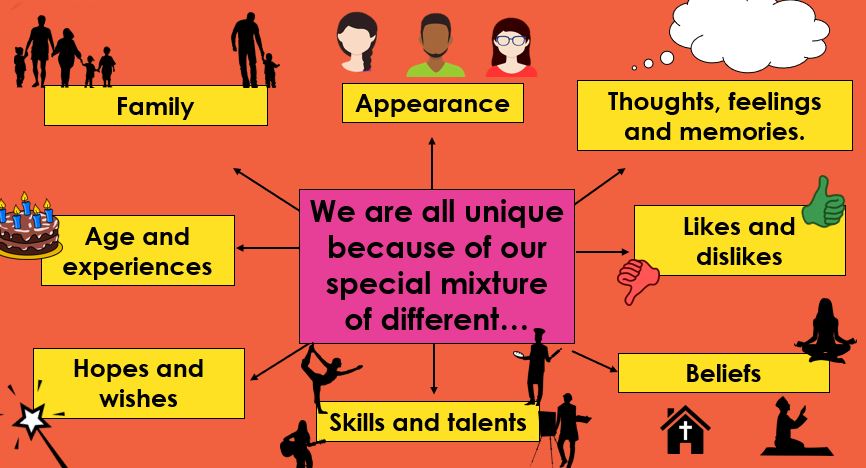
There are lots of things the same about us all but everyone is different too – nobody is exactly the same, everyone is unique.
No-one is good at everything but everyone is good at something.
After we had talked about what makes us different and what makes us the same, we drew a picture of our partner and what makes them special!

Living and Learning: Identity
Identity forms part of our Living and Learning curriculum where children learn about similarities and differences and how we should respect ourselves and others too.
There are things that are the same or different that are immediately obvious (physical features) as well as things you cannot see such as things you like doing, your religion or your family.

There are lots of things the same about us all but everyone is different too – nobody is exactly the same, everyone is unique.
No-one is good at everything but everyone is good at something.
We listened to the story, It’s ok to be different by Todd Parr.
Then, we did an activity to create our own imaginary creatures. Maybe you could have a go at this at home too? First, we had to draw the head and fold over the paper. Then, after swapping it with a friend we added the imaginary creature’s body. We folded the paper again and finally we swapped it with another friend to add the legs and feet. These were our finished creatures!
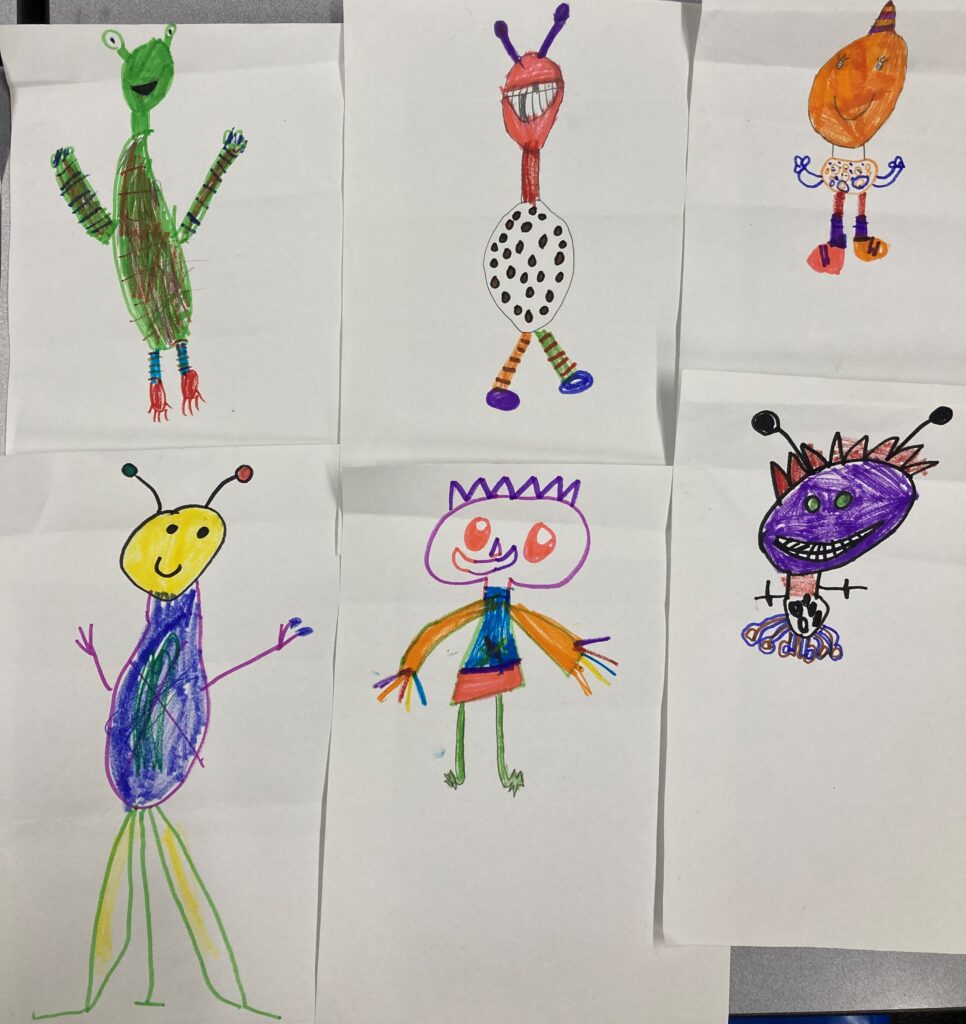
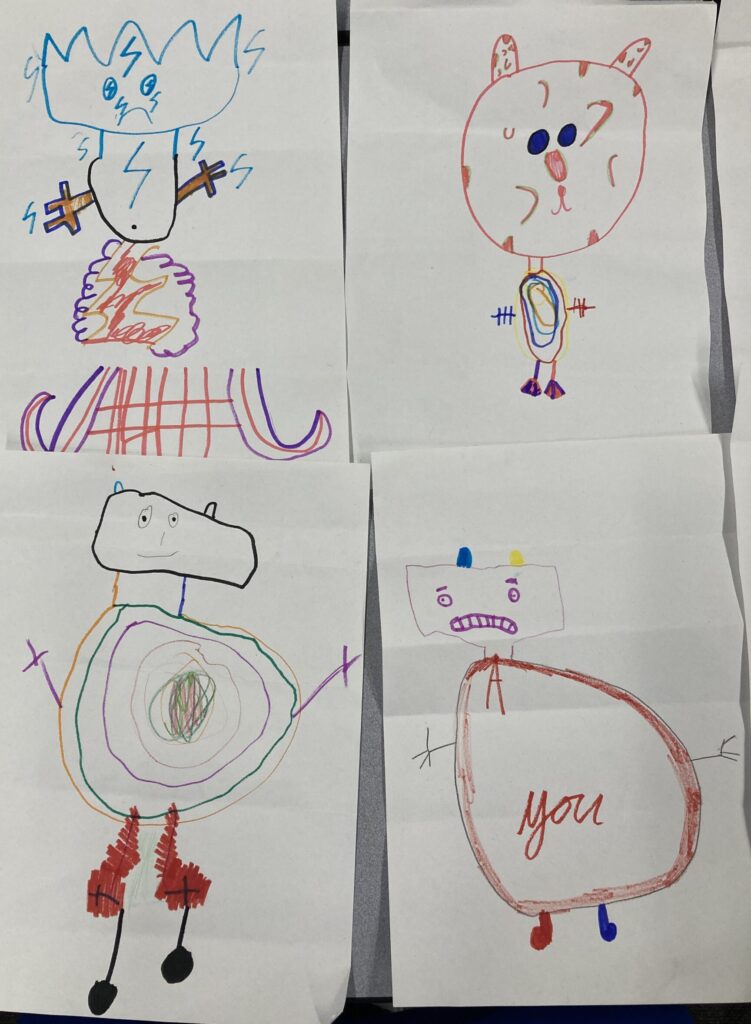
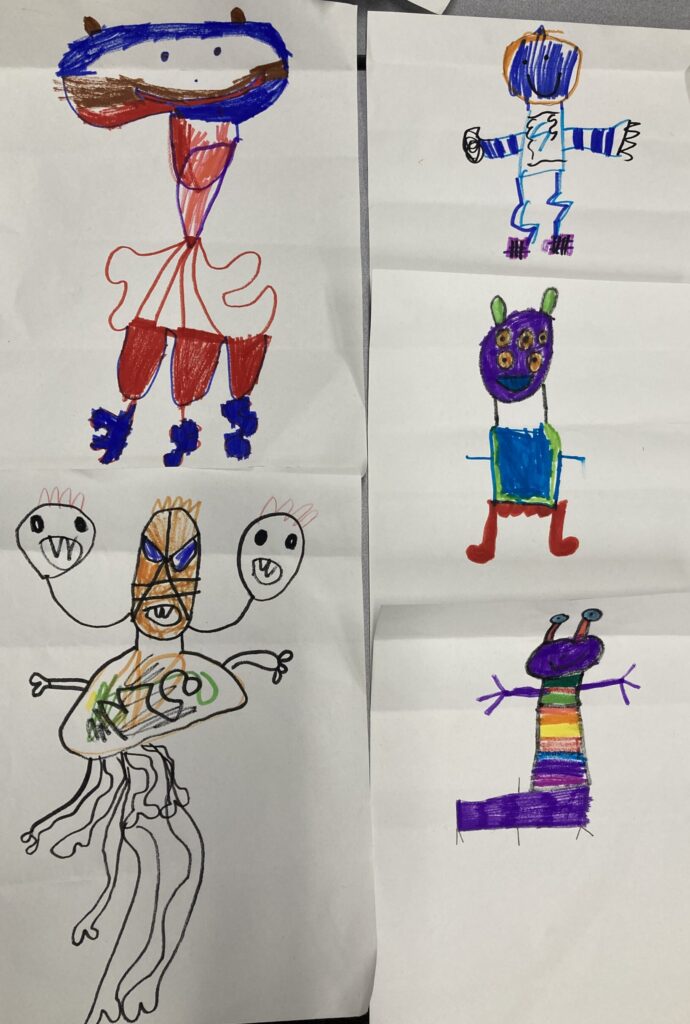
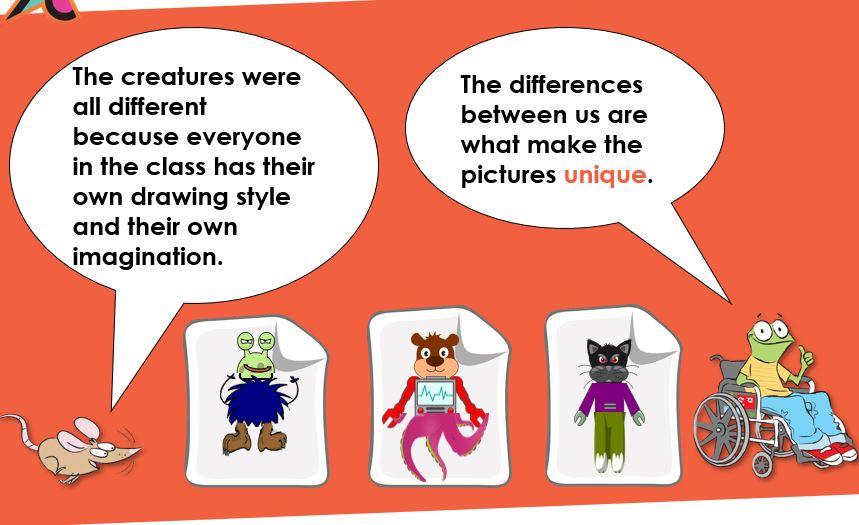
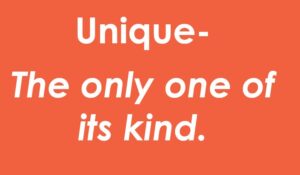
On Identity Day, we enjoyed sharing our differences and what makes us unique.
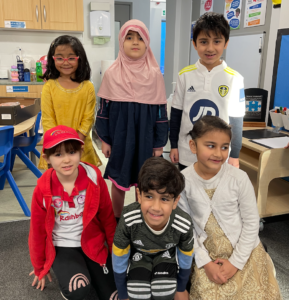
Topic recap morning!
In the middle of each half term, we have a morning where we revisit learning that we’ve done in previous topics.
Today’s drop-down morning included:
Geography – Where in the world am I?
Geography – human and physical features
DT – structures
We began our drop down morning by playing a chase the vocabulary game – 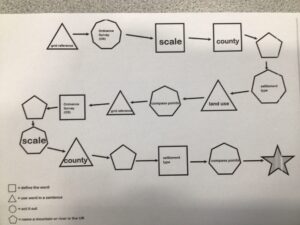
See if your child can remember our vocabulary.
In the second geography session, we identified human and physical features in different landscapes.
See if your child can remember the different human and physical features in this picture below and explain why:
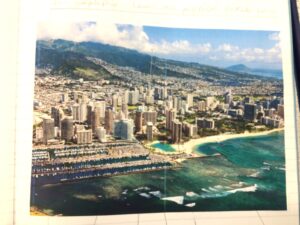
In our DT session, we played bingo by collecting answers to questions all about our topic.
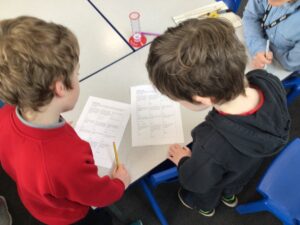
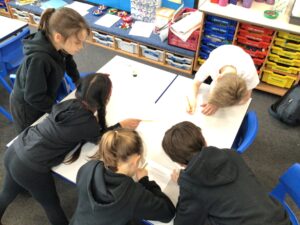
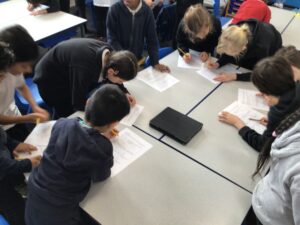
We finally created a structure using Lego and tested which one was the most stable! See if your child can answer these questions about our DT learning:
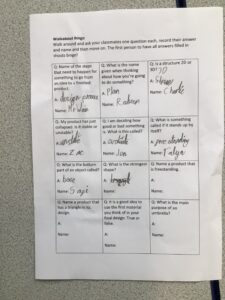
Well done, Y3!
Welcome back!
It was great to see Mrs Burke back at school today; I know she’s been missed by children, parents and staff.
Thanks to everyone who joined our early reading workshop this evening. As always, if you have any further questions about phonics, e-books or any other issues, please ask one of us at school.
Some more great learning in Reception last week. There was some fabulous den building and exploring – children going on lots of adventures discovering all sorts of things.
There was also some awesome jumping in PE and phonics learning, along with some building and investigating the dark.
I wonder what we’ll discover this week!
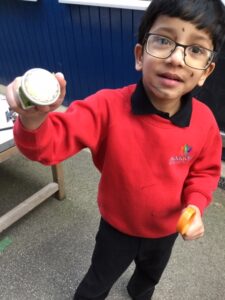
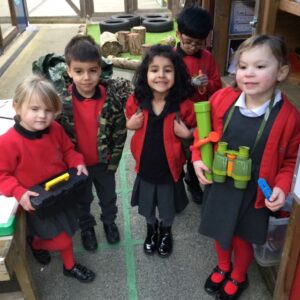



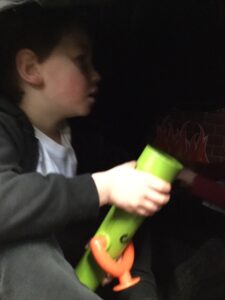
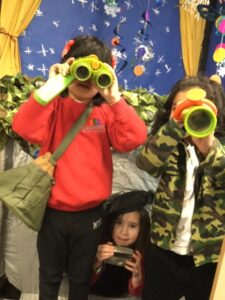
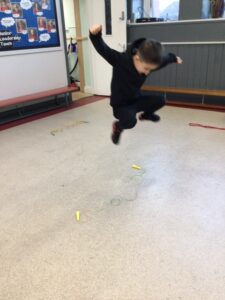

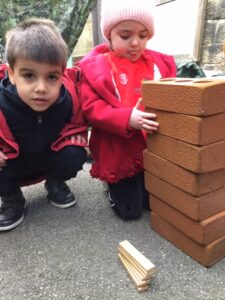
Super Scientists
This half term, we’ve been learning about biology. Our topic is evolution and inheritance.
We’ve been finding out how animals and plants have adapted to the environment they live in. If they didn’t change to suit their habitat, their species would eventually die out.
Adaptation is one of our science vocabulary this half term along with:
- natural selection
- variety
- prehistoric
- trait
- inherited
- evolution
- fossil
Challenge your child to define these words!
Check out our fabulous posters below, displaying information about the specific adaptations of some amazing animals.
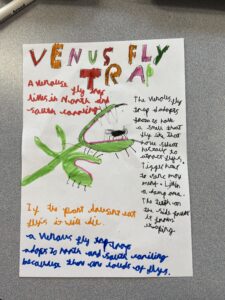
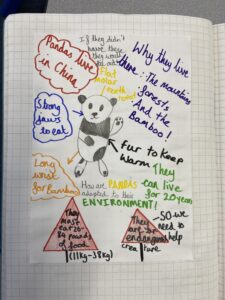
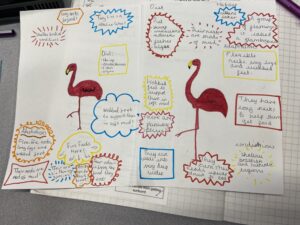
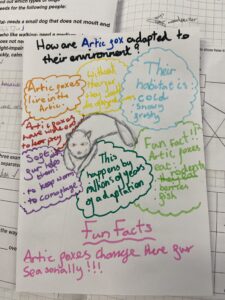
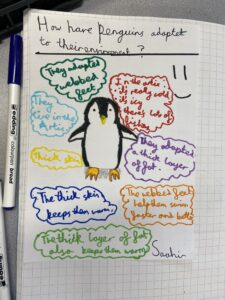
Maths fluency
Mastering number, or maths fluency, has been a new addition to our timetable this year. In case you missed it, Mrs Allaway, who leads on Maths across Sphere Federation, explained more about this in last weeks’ weekly message.


This year, Sphere schools are taking part in a new national programme for Reception, Year 1 and Year 2: ‘Mastering Number’. The programme aims to secure firm foundations in the development of good number sense for all children. The aim over time is that everyone leaves Key Stage 1 with fluency in calculation and a confidence and flexibility with number.
Why is fluency with number facts so important?
We want all children to develop fluency with number facts because we know this makes a huge difference to their progress in maths. For children who find maths difficult, it’s often the case that their only strategy is to count. They don’t see the relationships or make the connections that make maths easier. For example, if five and two is seven, seven minus two must be five – that’s the relationship within the maths.
An over-reliance on counting not only makes maths more difficult, it also inhibits flexibility, thinking and the development of problem-solving strategies. It doesn’t just affect calculating, it affects maths much more widely. We need children to have stopped counting by the time they move into Key Stage 2.
What is number sense?
Alongside fluency in number facts, we want our children to develop ‘number sense’: a flexibility with number where they reason; they see relationships; they see mathematical structures; and they see such things as if six and three is nine, then nine minus three is equal to six. These relationships won’t change in Key Stage 2 and beyond, the numbers just become bigger and more complex.
We want to support all children to think mathematically, make connections and see relationships because we know these are the characteristics that make maths learning successful.
Mastering Number sessions
In our short focused sessions for children in Reception, Year 1 and Year 2, we give children opportunities to think deeply about mathematical relationships and time to practise and really embed fluency with number facts. These 10 minute sessions are in addition to our main daily maths lesson.
In some sessions, we focus on deepening children’s understand of the composition of number: inside numbers there are other numbers. For example, inside eight there’s five and three, there’s six and two. Knowing that inside numbers are other numbers enables children to develop fluency skills.
We’re also developing skills in subitising. This is the ability to look at a small number of objects (often a maximum of about five) and instantly recognise how many there are without needing to count them one by one. This plays a key role in helping children see how numbers are made up, avoiding an over-reliance on counting.
One of the key resources children use in Mastering Number sessions is a rekenrek – a type of abacus or number rack. It supports children to feel and visualise numbers as well as noticing how numbers relate to each other. Children begin to build up strong visual images by first doing, seeing and noticing the maths.
How can I help at home?
Regularly accessing NumBots will support children to practise and really embed and develop crucial number facts. If you need help accessing this, please contact your child’s class teacher.
We won the Choice Cup!
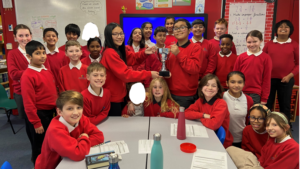
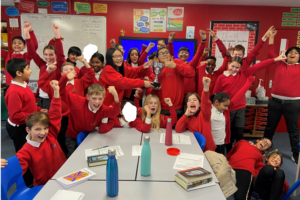
Well done to Y6 for your superb choices. Let’s retain it next week!
Learning phonics and practising early reading skills Zoom session
On Monday, there is a Zoom session about our updated provision for learning phonics and practising early reading skills. This is aimed at parents/carers with a child in Early Years and Key Stage 1.
The session is on Zoom at 6pm on Monday 31 January. Contact the office for the Zoom details in case you missed them.
Please get in touch if you’ve any questions, about how this affects your child, after the session.
Living and Learning: Identity
This week, we learned all about identity in our Living and Learning session.
We had to think about what makes us who we are.
We thought about all the different things that mean something to us and all the different things that make us both similar to others but unique from others, too.
Grace said, “I’m unique because my family are from China.”
“Something that makes me unique from others is my religion. I’m a Muslim,” said Raheem.
“Something that Jack and I have in common is that we both have brown eyes,” added Zac.
Ava said, “I’m unique because out of everybody on my table, I’m the only one who plays piano.” Ava then found out that she had that in common with Mr Wain!
The whole class had something in common – we are all part of the same community in Moortown Primary School!
Living and Learning: Identity and Community
Hello!
Over the last two weeks, the Living and Learning statements have been based around identity and community.
We have been talking about our identities and why being proud of our own identities is important. What makes me, me? Everyone in the class was able to identify important parts of themselves that they believe makes them special. Examples of these consisted of certain interests they have, clubs they belong to and religions they follow. The best part about this was that everyone’s identities are so different!
We have also discussed different roles that exist in our communities and how they relate to us. We looked at key jobs such as doctors, nurses, emergency services, bus drivers, teachers, club leaders etc. Finally, we decided who, out of all the people we come across in our everyday lives, is in our close inner circle.

As you can see, lots of us chose to have close friends and family in our inner circle and put other people like club leaders and shopkeepers in our outer circle.
It was great to explore this topic with the class and to see how confident they became in expressing their own identities!